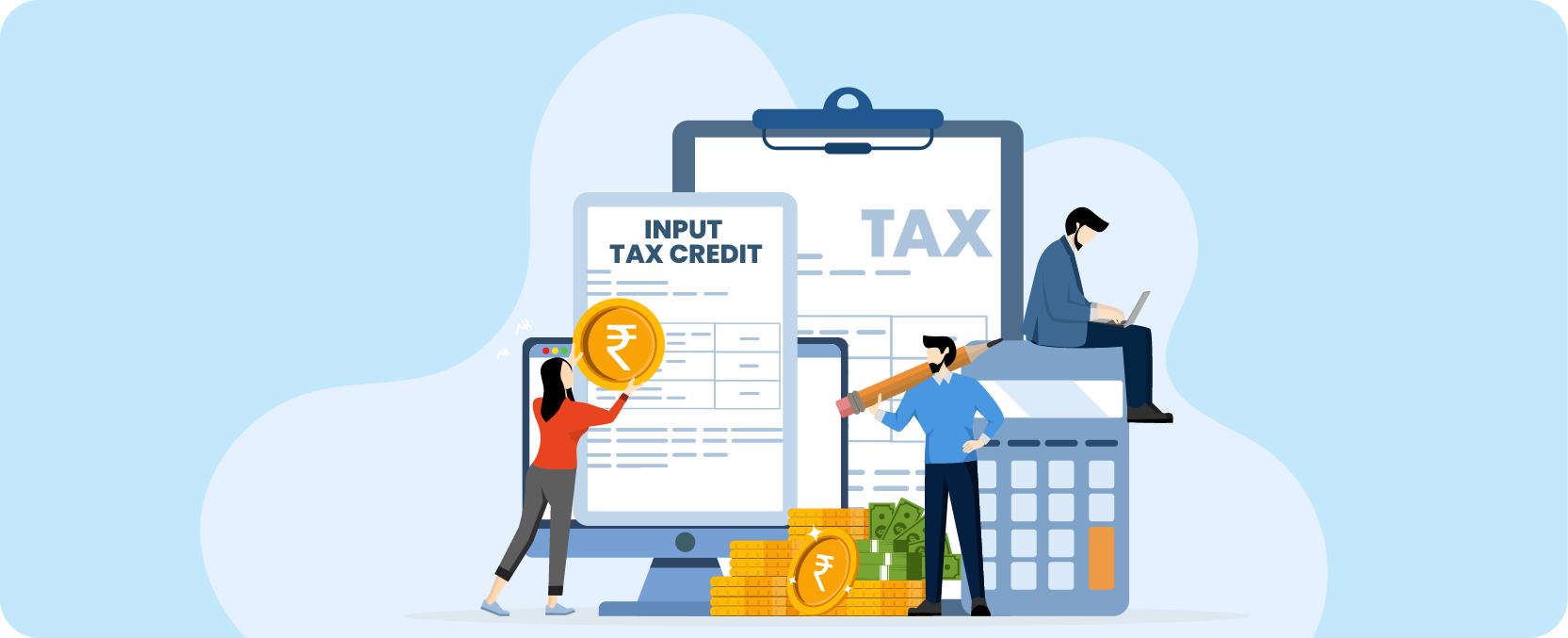- Published on: 14 Oct 2025
- Last updated on: 8 Dec 2025
- Post Views: 3987


Input Tax Credit (ITC) is one of the most important parts of the Goods and Services Tax (GST) system. It helps businesses avoid paying tax twice on the same amount — also known as the cascading effect of taxes. With ITC, businesses can claim credit for the GST they’ve already paid on their purchases, which reduces their total tax bill and improves cash flow.
However, not every business or expense qualifies for ITC. There are certain rules, time limits, and conditions you must follow to claim it correctly. In this blog, we’ll explain what Input Tax Credit is, who can claim it, and how the process works, along with key details about eligibility, time limits, and reversal.

Input Tax Credit (ITC) in GST is a system that allows businesses to reduce their tax burden by obtaining credit for the GST paid on purchases used in operations. ITC allows a registered individual to claim the tax they have already paid on purchases against the tax they have to pay on their sales. This ensures that the businesses pay tax only on the value added at each point in the supply chain.
Suppose that a manufacturer buys raw materials worth ₹1,00,000 and pays 18% GST of ₹18,000. The manufacturer collects 18% GST of ₹27,000 when the finished product is sold for ₹1,50,000. The manufacturer can claim an ITC of ₹18,000 for the GST paid on the purchase of raw materials, and pay the government the final GST of ₹9,000 (₹27,000 – ₹18,000).
The Section 16 CGST Act and GST Rules clearly specify the eligibility to claim the Input Tax Credit (ITC) under GST. Here is the ITC eligibility criteria you must meet to qualify for a claim:
ITC is limited or prohibited on some of the inputs like personal use goods, motor vehicles, exempt supply goods and specified services.
Blocked credits under GST are types of Input Tax Credit (ITC) that businesses cannot claim as per Section 17(5) of the CGST Act, even if the goods or services are used for business purposes.
These credits increase a company’s overall cost because the GST paid on such items can’t be used to reduce GST liability on sales.
Here are some common examples of blocked credits:

Here are the steps you can follow to claim ITC:
Time limits are important for ensuring that the credit is not disallowed due to time constraints. Section 16(4) of the CGST Act provides that a registered person is required to claim ITC by either of the following two dates:
As an example, in order to claim ITC on purchases made in the financial year 2024-25, the last date to claim is the date of filing the annual return of FY 2024-25 or 30th November 2025, whichever is earlier.

Reversals of Input Tax Credit (ITC) under GST occur when the credit claimed earlier needs to be added back to the output tax liability, effectively nullifying the benefit availed. This reversal is compulsory in different situations to ensure that credit is only claimed for the legitimate business expenses. The most frequent causes of ITC reversal are:
Here are the forms and documents required for claiming ITC under GST:

Input Tax Credit (ITC) is a pillar of the GST system that assists businesses in avoiding the tax cascading effect. However, ITC is subject to various conditions. Taxpayers should be aware of these conditions to ensure that they do not make any claim that is not permitted. You must also carry out proper GSTR-2B matching and timely filing to claim ITC smoothly and avoid penalties.
1. Who is eligible to claim ITC?
An individual registered under GST, who uses goods or services in the course of business and satisfies the prescribed requirements, is entitled to claim ITC.
2. What are the fundamental conditions to claim ITC?
Having a valid tax invoice, receipt of goods/services, payment of tax by the supplier, filing of returns on time and payment to the supplier within 180 days of the invoice.
3. Can you claim ITC on goods or services that are used personally?
No, ITC is not claimable on goods or services that are used for personal use or non-business purposes.
4. What is the time limit to claim ITC?
ITC should be claimed prior to the filing of the annual return or 30th November following the financial year of purchase, whichever is earlier.
5. What would be the case in case of failure to pay the supplier within 180 days?
The ITC claim must be reversed with interest. The credit is reclaimable after payment has been made.
6. Is it possible to claim ITC on capital goods?
Yes, it is possible to claim ITC on capital goods that are used in business, but with some limitations, including that no depreciation should be claimed on the tax component.
7. Is there any blocked credit under GST?
Yes, ITC is blocked on personal use of motor vehicles, food and beverages, club memberships and exempt supplies, goods/services.
8. How can ITC be reversed?
ITC reversal is to be made in cases where credit was claimed and the conditions are not fulfilled, like non-payment to the supplier, use of exempt supplies, or blocked credits.
9. What are special cases of claiming ITC?
New registrations, voluntary registrations, switching composition to the regular scheme, business restructuring, and goods sent to job work are some of the special cases.
10. Is it possible to claim ITC when the supplier has not paid GST to the government?
No, ITC can be claimed only when the supplier has paid the tax to the government.


